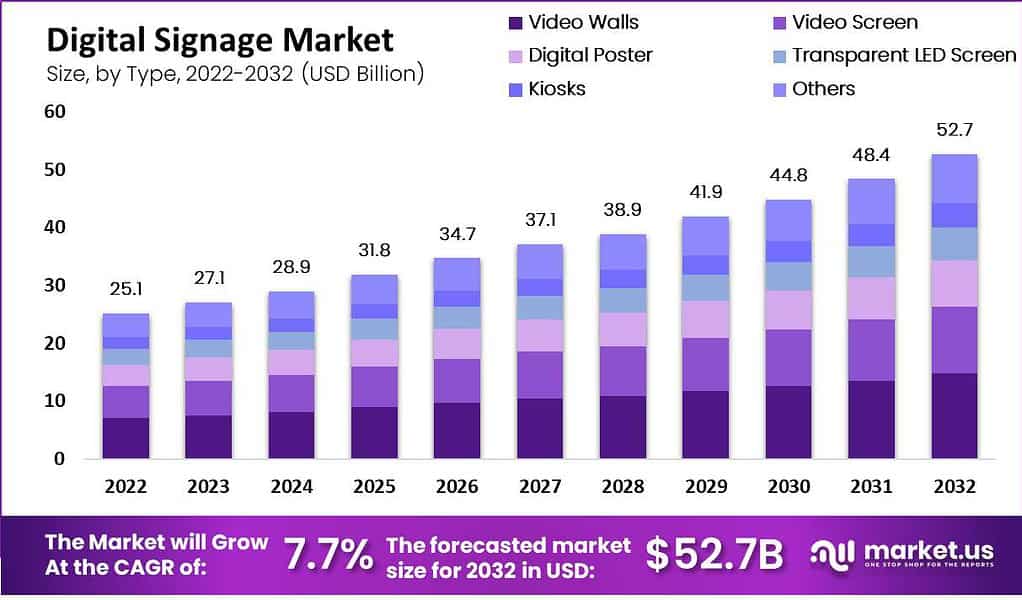The Digital Signage market is experiencing substantial growth, with a projected value of USD 52.7 billion by 2032, representing a remarkable Compound Annual Growth Rate (CAGR) of 7.7% between 2023 and 2032.
This market encompasses electronic display technology that serves various purposes in both public and private settings. These displays range from small signboards to expansive video walls, commonly found in airports, retail stores, restaurants, and corporate buildings. Their primary function is to convey information, promote products or services, and engage viewers in an attention-grabbing manner.
Digital signage systems rely on a combination of software and hardware components, including screens, media players, content management systems (CMS), and network connectivity. The advantage of remote content management allows for real-time updates, making it an efficient tool for information delivery.
The market’s growth is fueled by factors such as enhanced connectivity, flexibility, and affordability. There is a growing demand for advanced products that offer digitized information management and remote accessibility. Large display screens are increasingly used to provide high-quality information to large audiences, making them more effective than traditional methods. Additionally, the integration of biometric technology into digitized signs, including gaze tracking and heat path analysis, is driving innovation.
While the Digital Signage market is on an upward trajectory, it faces challenges. Increased spending on online advertising and the impact of the COVID-19 pandemic have restrained its growth. In terms of market segments, Video Screens dominate, hardware components hold the most significant share, and the retail sector contributes significantly to the technology application. North America currently leads the regional market, while the Asia Pacific is expected to witness exponential growth, particularly in India and China.
Key players in the industry, including Samsung Electronics, LG Electronics, Sony Corporation, NEC Corporation, and Panasonic Corporation, focus on providing digital signage hardware. As rapid urbanization continues, it presents new opportunities for market growth, especially in developing countries where the urban population’s purchasing power is rising.
The Digital Signage market is characterized by rapid digitalization and increasing demand for more effective advertising tools. Technological advancements, such as the integration of biometric technology, are driving further expansion. North America dominates the regional market, while the Asia Pacific shows significant growth potential.
In summary, the Digital Signage market is poised for significant expansion, driven by its adaptability, cost-effectiveness, and ability to engage viewers effectively. However, it also faces challenges, including increased online advertising spending and the lingering effects of the COVID-19 pandemic. Nevertheless, the market remains cautiously optimistic about its growth prospects.
More Insights
Recruitment Marketing Platforms Market Technical Report + Feasibility Study, 2023-2034
Industrial Design Market Economic Analysis and Feasibility Studies, 2023-2034
France Route Optimization Software Market News and Growth (Status and Outlook), 2023-2034
Automatic Identification System Market Company News and Industry Updates, 2024
Combat Management System Market Share Analysis Demand and Sales Forecasts By 2034
Digital Content Creation Market Events, News and Research Study From 2023-2034
Restaurant Digitalization Market Penetration and Global Industry Analysis 2034
Trade Management Market Size and Growth | Global Report [PDF – 2023]
Contact Center as a Service Market Value, Patent/Trademark Analysis and Growth in 2024



